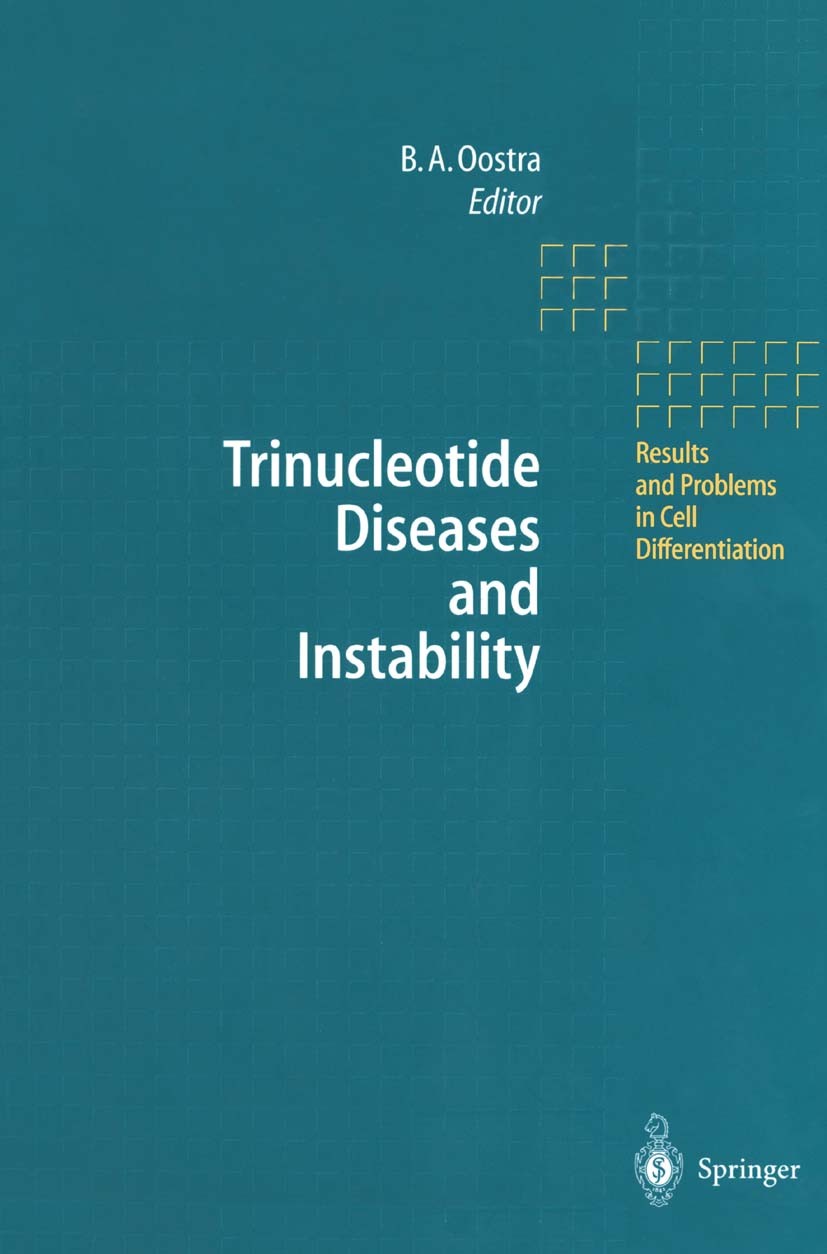| 書目名稱 | Trinucleotide Diseases and Instability |
| 編輯 | Ben A. Oostra |
| 視頻video | http://file.papertrans.cn/931/930274/930274.mp4 |
| 概述 | Describes the common molecular basis of a diverse series of human diseases, and how this knowledge can be used in diagnosis |
| 叢書名稱 | Results and Problems in Cell Differentiation |
| 圖書封面 |  |
| 描述 | Till recently, mutations in genes were described in textbooks as deletions or point mutations. These mutations can be inherited from a parent or they are de novo alterations. The discovery in 1991 that human disease can be caused by large-scale ex- pansion of highly unstable trinucleotide repeats has elucidated a new mutation mechanism, heritable unstable DNA. In the subsequent years more then 10 such disease genes have been identified. All dynamic mutations have been iden- tified in neurological disorders. There are ten possible trinucleotide repeats at the DNA level, but only 3 have been identified as being involved in human dis- eases. The rather frequent occurence of triplet repeats in the human genome indicates that other loci subject to unstable expansions may be discovered. The identification of repeat instability and the identification of disease genes containing trinucleotide repeats has helped to answer intriguing questions. The diseases share the unusual characteristic of inheritance with increased disease severity in successive gernerations, a phenomenon called anticipation. Trinu- cleotide repeat diseases are ideal subjects for direct testing because the muta- tion is |
| 出版日期 | Book 1998 |
| 關(guān)鍵詞 | DNA; DNA instability; diseases transmission; genes; genetic disorder; genetics; neurological diseases; trin |
| 版次 | 1 |
| doi | https://doi.org/10.1007/978-3-540-69680-3 |
| isbn_softcover | 978-3-662-22565-3 |
| isbn_ebook | 978-3-540-69680-3Series ISSN 0080-1844 Series E-ISSN 1861-0412 |
| issn_series | 0080-1844 |
| copyright | Springer-Verlag Berlin Heidelberg 1998 |
 |Archiver|手機版|小黑屋|
派博傳思國際
( 京公網(wǎng)安備110108008328)
GMT+8, 2025-10-18 12:53
|Archiver|手機版|小黑屋|
派博傳思國際
( 京公網(wǎng)安備110108008328)
GMT+8, 2025-10-18 12:53


